My last few weeks at HBMHS were underwhelming to say the least. A heat wave hit central Korea and with temperatures in the 90's and the humidity close to 100% classes were cancelled for the first couple of days. The school was also under construction so the hallways were filled with dust, wood and power tools. By the time school resumed I had just a week left before I left the country and 2 or 3 days remaining at school.
By this point I was very ready to leave Korea. I hadn't taught my high school classes in over 6 weeks and on one of the last days of school in July a couple of middle schoolers thought it'd be hilarious to yell "Mindy, go home mother F@#$%r!" After reporting it to one of the English teachers she contacted me later that day to tell me that their homeroom teacher didn't think it was a serious infraction and he wouldn't punish them. My co-teacher made them apologize to me but by then I was over it - I was tired of the blase and frequently disrespectful attitudes of students and co-workers towards the native English teacher. I left HBMHS with little acknowledgement - I brought banana bread which I had baked to school for all the teachers and said goodbye to students as I saw them in the halls. However I saw very few of them since I was moved to separate building due to construction and they were confined to their classrooms to take yet another practice SAT. I doubt most students even realized I was gone until the new teacher showed up the following week. My co-teachers did give me a gift as I departed from school on Friday afternoon - a set of expensive Korean lotions which I thought was a kind gesture. I was disappointed though that I wasn't able to say goodbye to most of my students - especially those who I had gotten to know relatively well over the past year. Thankfully I am friends with most of them on Facebook and occasionally I'll chat briefly with one or two on our Facebook pages. Looking back I'm still not sure what to make of my time in Korea. The experience gave me the opportunity to work with some great students, the ability to share my passion for learning about other cultures and of course the ability to travel a lot. However, after 2 years there I can confidently say Korea is not the country for me - while there were aspects of my life in Korea I liked, I wouldn't say I enjoyed living in Korea. Out of all the countries in which I've lived and traveled I would say that Korea is one of the worst fits for me but it was an experience from which I learned a lot. 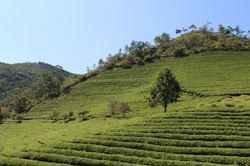 Another destination during my trip to the southern part of the peninsula was Boseong, a small town on the south western side of Korea. This town, approximately 3 hours from Busan, is famous for its rolling hills on which green tea plants are carefully managed and harvested. Boseong green tea offers up some of the highest quality tea on the peninsula (with prices to match that reputation). I'm a big fan of green tea flavored food so I was excited to visit the Green Tea Plantations where I was able to try a green tea smoothie, green tea bibimbap (below) and an assortment of green tea candies. A view from the top of the plantation - you can see green tea plants, trees, the mountains and in the background the sea.
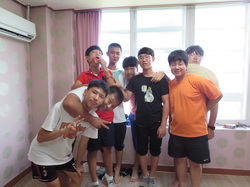 After returning from Bali I prepared for my final few classes in Korea. Most Korean schools are on vacation in late July and into August. However, that doesn't mean there aren't classes - students sign up for extra classes and camps. I taught a series of classes to a bunch of very unenthusiastic 1st year high school students (and who could blame them, I wouldn't want to take classes during my break either). The following week I taught a class to a group of 8 middle school students. We spent the entire day studying food and below are a few photos from our class together - Taste Test Food Advertisement Iron Chef Ramyeon Cook Off 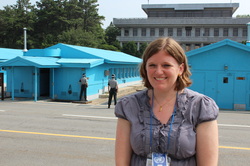 With the clock counting down I've still been slowly ticking off items on my "bucket list". Pretty high on that list was a visit to the DMZ. The demilitarized zone (DMZ) is the border between North and South Korea. It is supposed to be the most heavily armed border in the world - which isn't surprising when one realizes that technically the two countries are still at war. The DMZ is divided into different sections - the Joint Security Area (JSA), the 3rd tunnel, an outlook post and Dorasan Train Station. There are a few tour groups which visit the DMZ visiting the various areas within the DMZ however the USO tour is supposed to be the best mainly because it includes a visit to the JSA (as do one or two others). Reuniting the Peninsula - The 3rd Tunnel of the DMZ Naturally since the USO (Koridoor) tour is one of the best it is also one of the busiest and fills up quickly even though tickets are nearly $100 USD per person. I was fortunate to secure a spot in June and after submitting the necessary information I had a ticket. So one evening after school I traveled up to Seoul so I could visit the DMZ early the next day. Our trip started at the USO headquarters next to Camp Kim, the U.S. military base located in Seoul. Participants must follow a strict dress protocol - t-shirts must be collared, no shorts or gaucho pants (capris?) in addition to no open-toed shoes. The enforcement of these rules varied - I saw women wearing non-collared t-shirts as well as a guy wearing shorts but I also witnessed a woman being refused on the trip because she was wearing sandals. The guide for the trip was Brandon, the manager of the USO. We were fortunate enough to have Brandon as a guide in part because of his background - a Korean who was born and raised on the peninsula he moved to the United States at 20 and enlisted in the U.S. army in which he served for 10 years. His service enabled him to obtain U.S. citizenship and therefore disallowed him from serving in the Korean army. Being Korean he could explain aspects of Korean culture as well as share his insight on how Koreans feel about the North/South situation (most aren't for it due to North Korea's economic state). As a former U.S. soldier he could also offer some perspective on the U.S. military involvement on the peninsula. Truce Village - Joint Security Area
After the presentation we were loaded up on a bus and taken to Truce Village within the JSA. This is where North and South Korea meet and is under control of the United Nations Committee and North Korea. If you look at the picture above you can see a small raised area between the blue building - this is the actual border between the two countries. Before being permitted into this area we were given strict instructions by our US military escort such as not pointing in the direction of North Korea. We were permitted to stand at the top of the concrete stairs looking towards North Korea for 3 minutes before being herded into one of the blue buildings for 3 minutes. While we were visiting Truce Village South Korean soldiers stood guard and North Korean soldiers came out of their own building to watch us with binoculars. South Korean and North Korean Soldiers in the Joint Security Area
After we left Truce Village we stopped at a look out point where you can see into North Korea, specifically Propaganda Village - a "town" consisting of empty hollow buildings and world's third tallest flag pole hoisted on which is a flag so massive that it weighs nearly 600 pounds. The soldiers pointed out that they realized the village was in effectively empty years ago because lights inside of the taller buildings would shine bright and fade in higher floors indicating that it was a single light on the ground floor illuminating the entire building. U.S. Soldier Escorts on the JSA Tour After leaving the JSA and Camp Bonifas (where we left behind our military escort) the rest of the tour consisted of a visit at the 3rd tunnel - one of many tunnels dug by North Korea found within South Korea. It is suspected that there are tunnels as far into the country as Seoul. We then visited a lookout point which you could see into North Korea and finally Dorasan Train Station - where up until recently trains ran to Kaesong Industrial Complex, a factory run jointly by North and South Korea. The factory was closed during the spring when Kim Jong Eun threatened war against South Korea and the United States. At the moment the train station is just an empty building though a woman still sells tickets (visitors can go out to the platform with a ticket) and Korean soldiers stand guard. Even at the DMZ things are "cutesy" My visit to the DMZ (specifically the JSA) was probably one of the most interesting things I've seen or done in Korea. I was a bit surprised because I'm not a big war history buff but it was an interesting experience to see the actual border between two countries still technically at war and observe the precautions taken throughout the entire JSA. Upon returning to Seoul and concluding the tour I set out for Itaewon, a neighborhood near Camp Kim which boasts a large selection of international restaurants and stores. As I walked there I came across a memorial park for the Korean Civil War. The park was filled with statues depicting the country being torn apart as well as military vehicles used during the war. Below are a few photos I took at the park - I think it was a fitting end to the day. When you hear about an island with a soft breeze, lush green foliage, clear blue skies and cerulean water that shimmers in the sunlight I doubt your first thought would be it is anywhere in Korea. The peninsula is better known for its concrete cities, expansive rice paddies and rolling mountains than semi-tropical islands. However, Korea boasts a few such islands most notably Jeju-do, south of the peninsula and the lesser known Ulleung-do which is situated in the Sea of Japan. I probably never would've ventured to Ulleung-do on my own. It's not a well-known destination like the aforementioned Jeju or even the cities of Busan or Seoul and it's a bit out of the way since it is in the middle of the Sea of Japan. However, the Gyeongsangbuk-do Office of Education offers a couple of trips a year for EPIK teachers and I was fortunate enough to get chosen for the spring Ulleung-do/Dok-do trip. And so early one morning in May I set out to join other teachers on this EPIK trip. The island of Ulleung-do is a 3 hour ferry from the harbor of Pohang (approximately 2 hours from my small town). Once we arrived we spent the next couple of days exploring the island and its natural beauty as well as local temples. The island which is relatively small can be easily circumvented in a few hours. Meals consisted of local delicacies such as mountain vegetable bibimbap and hoe, a type of raw fish (which as you might guess I did not try). While the Gyeongsangbuk-do Office of Education sponsors two trips a year for EPIK teachers to learn about Korean culture the Ulleung-do/Dok-do trip isn't without ulterior motives. I suspect the main reason behind the trip - why the Gyeongsangbuk-do Office of Ed sponsors 50 foreigners and pays for their food, lodging and transportation for 3 days - is that it is a propaganda trip to convince foreigners that the island of Dok-do belongs to Korea. Dok-do or as it is known in the West the Liancourt Rocks is a contested territory between Korea and Japan (where it is known as Takeshima). Even today the governments of these two countries argue bitterly over who truly owns the land. Both countries state that they have a historical claim to the land which is only marginally closer to mainland Korea than that of Japan. While the basis of the argument is in part due to fishing rights in the area as well as the possibility of natural gas deposits below it the issues runs much deeper for many Koreans. The pictures below are of a 3-D model of Dok-do (on the left) and a sign at the museum (on the right) - note the final notice on the sign. After our daily jaunts around the island we would return to the hotel where we would sit through lectures given by a law professor at a Korean university. The professor spoke at length about the legal aspects of Dok-do - the history of Korea's claims, whether the land should be considered a rock or an island (this distinction determines the amount of mileage a country gains with indisputable boundaries around the land mass) and more. Though aspects of the lectures were interesting I found them to further propagate the Korean government's agenda of trying to get the international world to back its claims for Dok-do and the vilification of Japan via half-truths. One of the most glaringly obvious was the repeated claim made during the lectures that Japan never apologized for the atrocities committed during the colonial period. This simply isn't true - the Japanese government including multiple prime ministers as well as Emperor Hirohito and the current Emperor Akihito have apologized. It's understandable if Korea didn't feel the apology was adequate but to continue to state that Japan never apologized is a fallacy. While it seems to be a minor matter I believe it reflects the situation at hand - Korea refuses to acknowledge attempted amends made by the Japanese because the national psyche is caught up in a cycle of hate. However, this doesn't mean that Japan is completely absolved of the horrors committed in its past especially as the far right wing in the government makes outrageous claims and continue to push for educational textbooks to eliminate many of the atrocities from its colonial period at the hands of the Japanese military. Our journey to Dok-do occurred on the second day of our trip. After traveling around Ulleung-do in the morning we boarded a ferry with dozens of Koreans for the island. This ferry ride took an hour and half one way. When we arrived at Dok-do I think many of us were surprised at how small the land was - the debate whether it is an island or a rock would be difficult to determine. A small garrison of Korean police officers live on the island though I imagine not very comfortably. While there we were limited to the dock - people were not allowed to touch the actual rock formation of the landmass (pictured above) - of which a Korean policeman made sure to enforce (strangely enough that's the only law I've seen a Korean policeman enforce). And how long was our visit there for? A mere 20 minutes - the longest amount of time visitors are permitted to stay on the island. After that short amount of time we re-boarded the ferry and headed back to Ulleung-do on a slightly rocky sea. After living in Korea for two years it has become apparent to me that Koreans strongly associate the claim to Dok-do with the Korean national identity as a whole. Dok-do isn't just a series of islands in the Sea of Japan (or the East Sea as it is called on the peninsula) but a symbol of the on-going animosity between Japan and Korea. If one isn't familiar with the history of Korea it's important to know that Japan attacked the country a number of times in the past and eventually colonized the peninsula before the onset of WWII. It is true that at times in history the Korean peninsula suffered horrific atrocities at the hands of Imperial Japan. The lingering effects of those severe actions is that even today many Koreans harbor a extreme hate for Japan which seems to be a strong factor behind the association of Dok-do as part of their national identity. I will not presume to fully understand the issues between the two countries or what it is like to have survived some of the atrocities of colonization or war (of which part of the population in both countries lived through) however the dramatic hate directed towards the Japanese people is a bit difficult to deal with coming from the viewpoint of a foreigner. Sadly that hate is being passed on through the generations and it probably will not change in the near future. Upon returning from this trip I can reflect back and think about how it was a memorable adventure. I was able to see a part of Korea I never considered visiting and grew to appreciate the tiny island of Ulleung-do and its intense natural beauty. Visiting Dok-do gave me the opportunity to gain insight in to the issue from the perspective of international law as well as come to face with just how strongly Koreans associate the landmass with their own national identity. However, what I'll remember most about this trip are the gentle lapping waves of shimmering blue water and the soft breeze of this quiet Korean island.
If the name Bongamsa sounds familiar it is because last year, on the Buddha's Birthday, I visited this esoteric temple tucked away in the mountains of Gyeongsangbuk-do. The temple is a meditative spot for the Jogye order (akin to Zen Buddhism) and closed to all but the Buddhist monks who train there. However, in honor of the Buddha every year the monks open the temple up to the public on his birthday (a public holiday here in Korea) and it quickly becomes crowded with throngs of ajummas and adjoshis wearing brightly colored hiking gear along with a few families and young couples. It's not a surprise that people flock to the temple on the one day that it is open - not only is it a relatively unique opportunity to explore an otherwise exclusive temple compound but it is also a strikingly beautiful temple with a backdrop of the towering mountains of central Korea. For the visitors who are there as devotees the main temple building which features a large statue of the Buddha is open and occasionally a monk a will be in there chanting the sutras. For the rest of the visitors the temple grounds are open to explore though there are some areas that are still off limit to visitors. As Buddhist temples do on the auspicious day of the Buddha's birthday the temple offers a small meal for visitors - a bowl of simple bibimbap (mixed vegetables, rice and gochujang, a spicy sweet pepper paste) and another bowl of seaweed soup. Below are a few pictures from a morning at the temple ~ This year on Wednesday May 15th teachers throughout Korea were honored with "teachers' appreciation day". In the case of Hamchang that meant a ceremony the day before where the students lined up on the soccer field and the teachers were presented with corsages (the boys were brave enough to pin them on the male teachers but I don't think a single one even attempted to pin one on any of the female teachers). Afterwards each teacher received a pair of hiking socks from the student body. Hiking socks might seem an odd gift but Korean gifts are typically though not always practical. The teachers also received a box of 24 mini cheese cakes from the owner of the school - a thoughtful gesture but not really practical, I ended up giving some of mine away to the students with whom I rode the bus later that day.
On the day of the holiday school was cancelled and the teachers all went to Sangju for the annual teachers' volleyball game. This was an entire day event of eating, drinking and playing volleyball. Each school had a selected volleyball team that played the tournament style game. From what I gather tournament volleyball is a bit different from sport volleyball and it took me a game or so to catch on to the rules (I was a bit confused for awhile why kicking the ball was an acceptable way to volley the ball back over the net.) I was fortunate that my friend Grant also works at a Hamchang school and attended the tournament so in between his games we could sit and chat, otherwise it would've been a very lonely day in the sun while my co-teachers gorged on meat and drank alcohol. From what I gathered Hamchang's volleyball team did well - they were in the semi-finals when I left the tournament at 5pm though I suspect they must have lost since nothing was said of it the following day.  For the past year I've been eagerly counting down the time I have left in Korea and in late April it struck me - I only had a few months left. Suddenly I realized there were a few things I still wanted to do while here and so I created a "bucket list" of sorts with the things I want to do before I embark for the journey home. My bucket list isn't all that long - there are fewer than 10 items and I've started checking them off one by one. The top entry on my list was attending the Lotus Lantern Festival in Seoul in mid-May. This annual festival in honor of the Buddha, which I also attended last year, is held the weekend before the Buddha's birthday. I decided that I could easily knock a few items off my list and planned a weekend in Seoul doing a variety of activities. Lotus Lantern Festival The Lotus Lantern Festival, a bright and colorful celebration for the Buddha, is held in a central location of Seoul. Jogyesa, the headquarters for the Jogye order in Korea organizes the parade (which concludes at the temple) as well as other activities which are held on a closed strip of road which passes by the temple. Though it seems the festival has foundations in localized Buddhist traditions the Lotus Festival itself is relatively new only dating back a few years. Hundreds if not thousands of people participate in the parade - Buddhist monks from throughout Korea and the world, women dressed in hanbok (traditional dress), children from local schools and even foreigners. Most of the participants carry some type of lantern though others dance or play instruments. A few of the parade participants gave away their lanterns at the end of the parade and I was fortunate enough to be the recipient of one such lantern (they seemed to have favored children and foreigners). Below are a few photos of Jogyesa and the parade Sanchon Another item high on my bucket list was to enjoy another meal at a Buddhist restaurant. Since Baru, the restaurant across from Jogyesa, didn't have any open tables I walked over to Sanchon which is tucked back from the main road in Insadong. Sanchon is probably the most well known temple restaurant in Seoul, it was started by a former Buddhist monk and in the evenings there is a musical performance. Like Baru the restaurant is vegan and uses a variety of seasonal and fresh vegetables. The style of food of the two restaurants is reflected in their decor - Sanchon offers a more "traditional Korean experience" with large plants, hanging lotus lanterns and traditional items throughout the restaurant. The food follows suit and seemed to be more traditional Korean fare. On the other hand Baru is a more sleek and modern restaurant without any hint of traditional kitsch as is the food - the restaurant focuses on a modern gastronomical experience. Which restaurant a patron might prefer probably depends on the experience he or she is expecting - a modern take on temple food or something more traditional. Personally, I preferred Baru's dishes but I can see how Sanchon's atmosphere would appeal to the a visitor to Korea. Changdeokgung Palace After spending the night at a local hanok (traditional home) I arose early in the morning to visit the nearby Changdeokgung Palace, a former residence of Korean royalty. Seoul has a few different palaces, the most famous being Gyeongbokgung which I visited lasted year. Changdeokgung is best known for its gardens in which seasonal flowers bloom. Below are a few photos I took of the palace. After exploring the palace I headed to an outdoor market that specializes in organic food, most of which is vegan. I was able to enjoy a delicious lentil burger before heading back to the Lotus Lantern festival. The street in front of Jogyesa was closed off and there were a variety of booths on Korean culture and Buddhism both in Korea and other countries. I chatted for a couple of minutes with monks from Sri Lanka and Nepal before being blessed by them before beginning the long journey back to Jeomchon.
 May Day, a worldwide celebration of the worker has recently become a holiday for contract workers in Korea. Since native English teachers are employed as contract workers one of the perks is that we get the day off - and so I hopped on a bus and headed out to Saejae for Chasabal, the annual ceramics festival. I attended the festival last year which you can read about here. I thought it'd be a quiet day at the festival wondering around and snapping photos. However, the day didn't quite go as planned since while I was waiting for the bus I met Kylie, a Chinese woman on holiday from her job in Australia. She had been visiting a friend in Daejeon and on a whim she decided to travel to Mungyeong for the festival. Unsure what bus to take she asked me about it at the stop and we struck up a conversation and ended up spending the day together. In an effort to repay some of the kindness shown to me on my many travels I even invited her to spend the night at my apartment so she could avoid paying the hefty 70,000 won at the tourist hotel near Saejae (which still was kind enough to hold her luggage for her). After disembarking from the bus we made our way to the festival which was held in a replica of a traditional village which is used for television dramas. My goal for the day was to purchase a few ceramics from the local artisans - all master potters who work in the Mungyeong tradition. I had a miscommunication with one of my students and mistakenly believed his father would be featured there so we set off to find him. After a bit I realized he wasn't there so we visited a variety of shops as I tried to get a feel for different potters and their style of work. While overall I would say the pottery was reasonably priced - teabowls were about 20,000 won (~$20 USD) there were some pieces that required greater skill such as teapots which easily fetched $100 or more. My first purchase was a simple oblong vase that I fell in love with because it had a small carp sculpted on the bottom. It was there that I received "service" a common Korean business technique which means a freebie. The potter gave me a small teacup. After walking around a bit we stopped at one of the buildings for a cup of tea. This is a regular event at the replica village - not something unique to the festival. However, during my previous visits only a single type of tea was available but we discovered that for the festival there were 4 different types of tea. Kylie and I tried each type of tea and watched curiously as the women prepared each type differently and served the tea in equally diverse tea cups. During each visit the women making the tea would try to chat with Kylie in Korean and none seemed to realize that it was me, the white girl, that typically understood what they were saying rather than Kylie who is Chinese. After our enjoying the tea we wandered over to the part of the village which boasted the international master potters. We met artisans from all of the world and they advised us that one of the potters was getting married in the village at that very moment. Kylie and I quickly headed over to the ceremony which was held outdoors for all the visitors. The ceremony was an abbreviated form of the traditional Korean ceremony. The groom, a Korean potter and his Japanese wife were married during the ceremony with dozens of friends, strangers and their two young boys looking on. As the ceremony came to a conclusion we began to walk back through the village and stopped briefly for a quick photo while wearing royal traditional clothing. Then we walked around a bit more and I picked up 2 tea cups (with a third one thrown in as service) and a small flower vase. Afterwards we walked over to the food area and ate some incredibly over priced and not very good food. Once we were done at the festival we began the journey back to Jeomchon - walking to the bus stop and waiting for the bus which turned out not to be schedule to arrive for a couple of hours, taking a taxi back to Mungyeong and a bus from there to Jeomchon and then walking to my apartment. Afterwards we met up with my friend Grant and we went out for a traditional Korean meal since Kylie hadn't had one yet. A traditional meal usually includes a bit of fish, rice and a lot of side dishes, called banchan. Following dinner we headed back to the apartment and crashed after the long day. The following morning Kylie went to Andong to visit Hahoe Village on my recommendation and I headed off to school. |
| Mindy in the City |
|
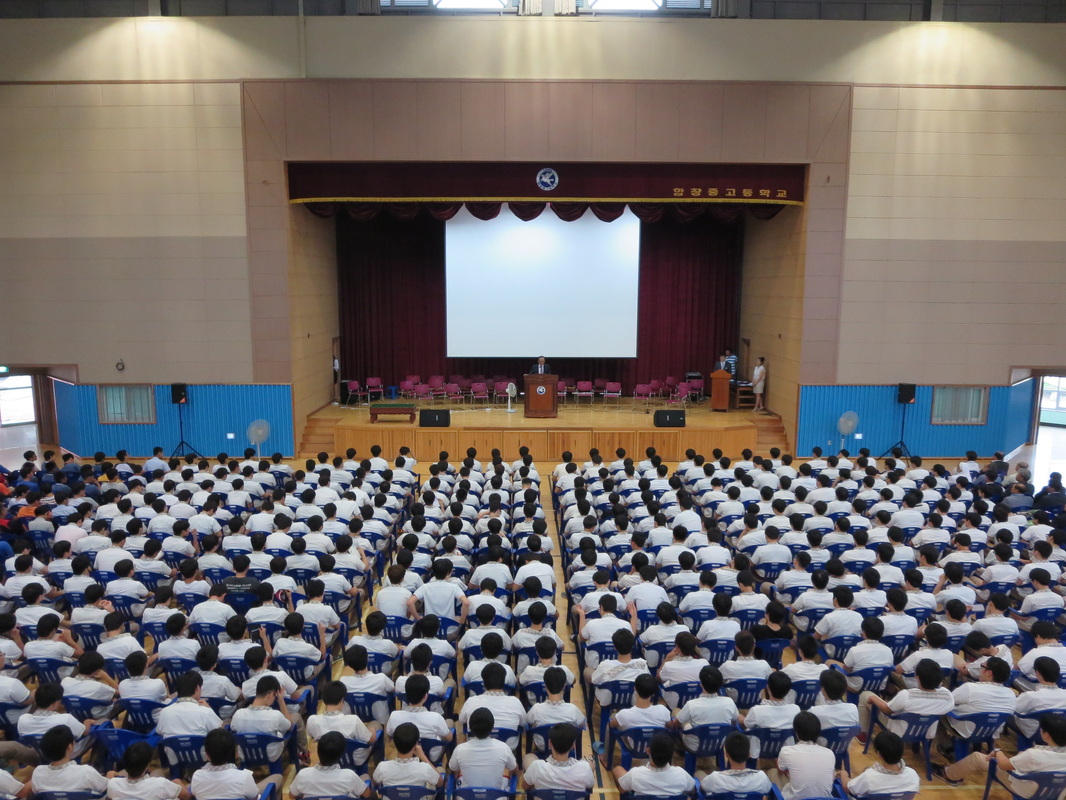
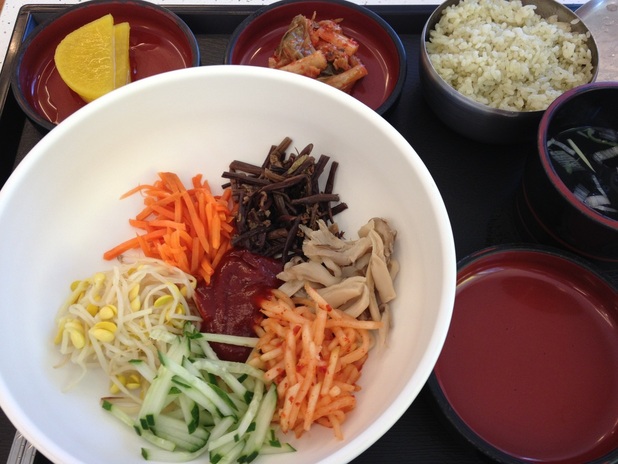
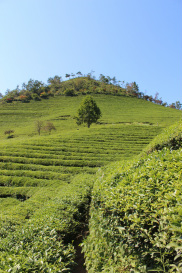
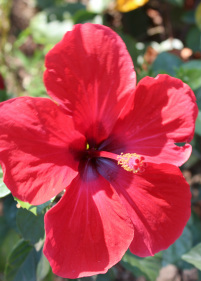
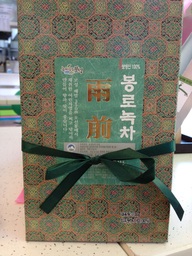
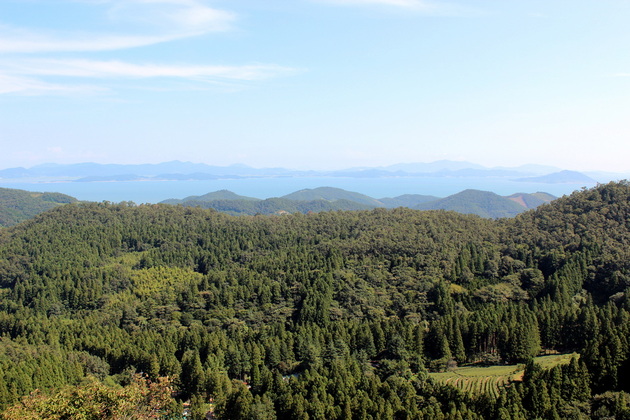
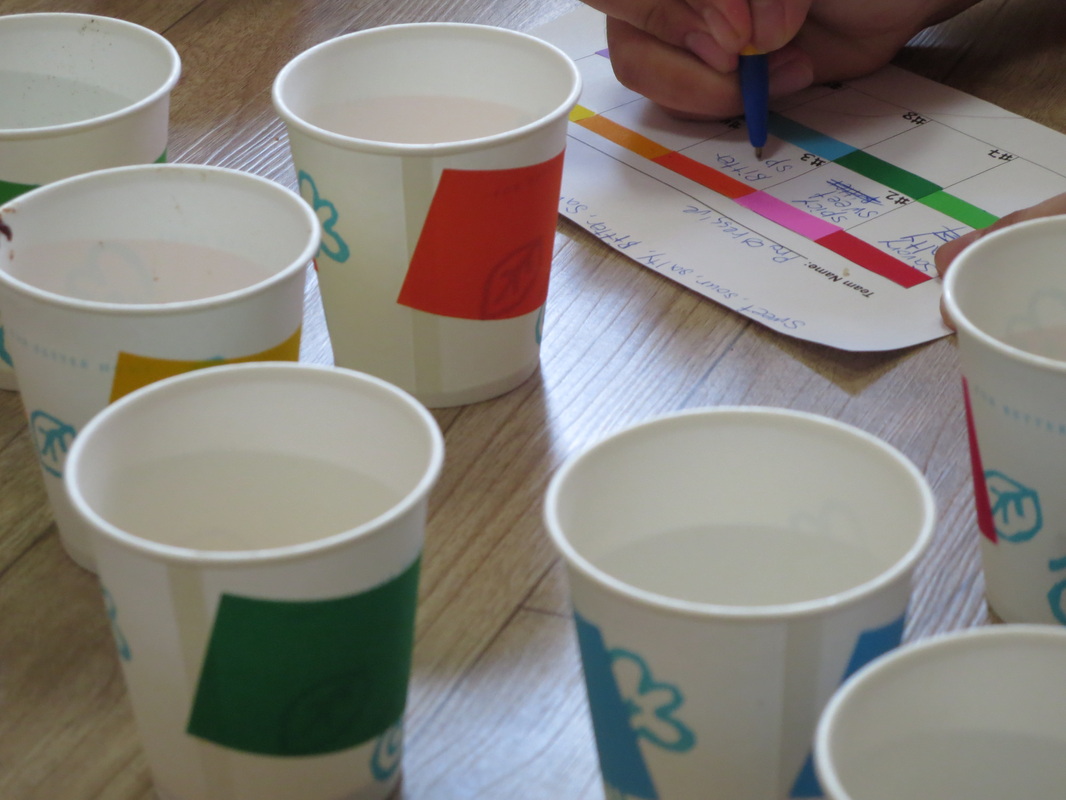
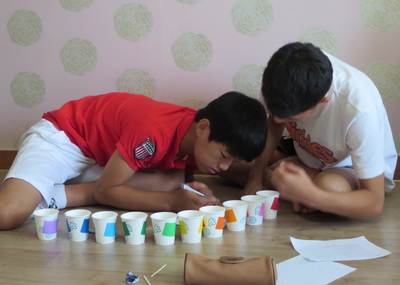
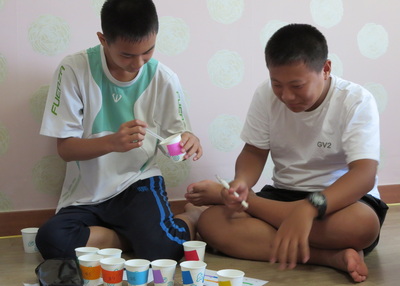
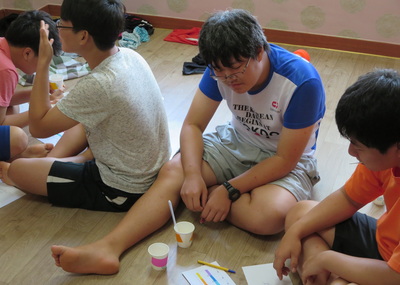
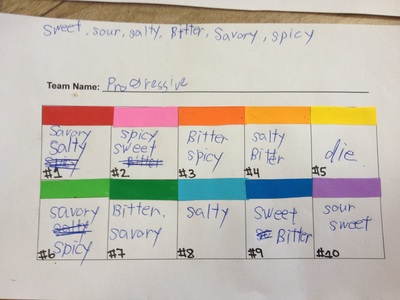
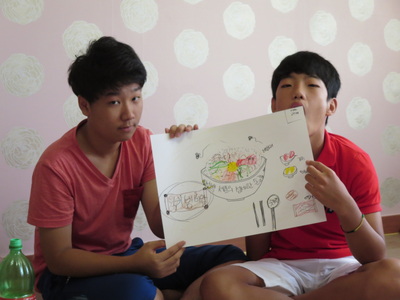

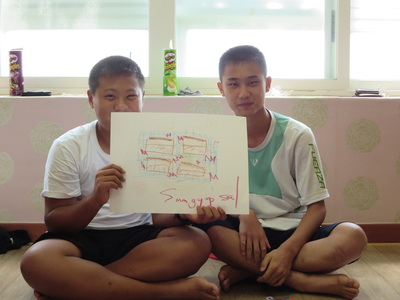
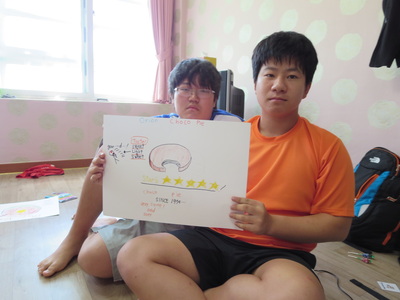
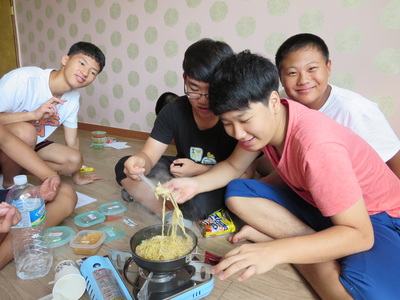
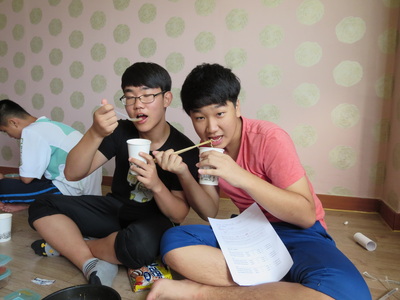
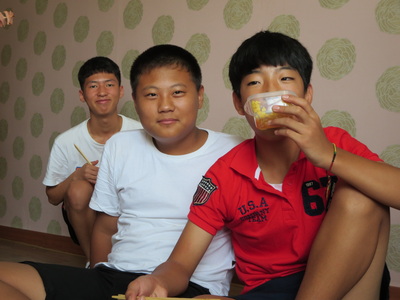
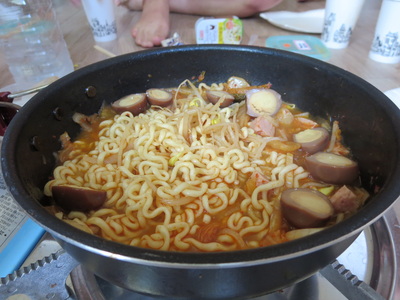
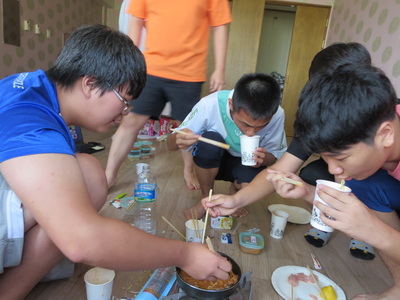
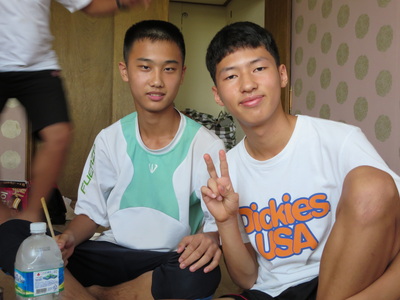
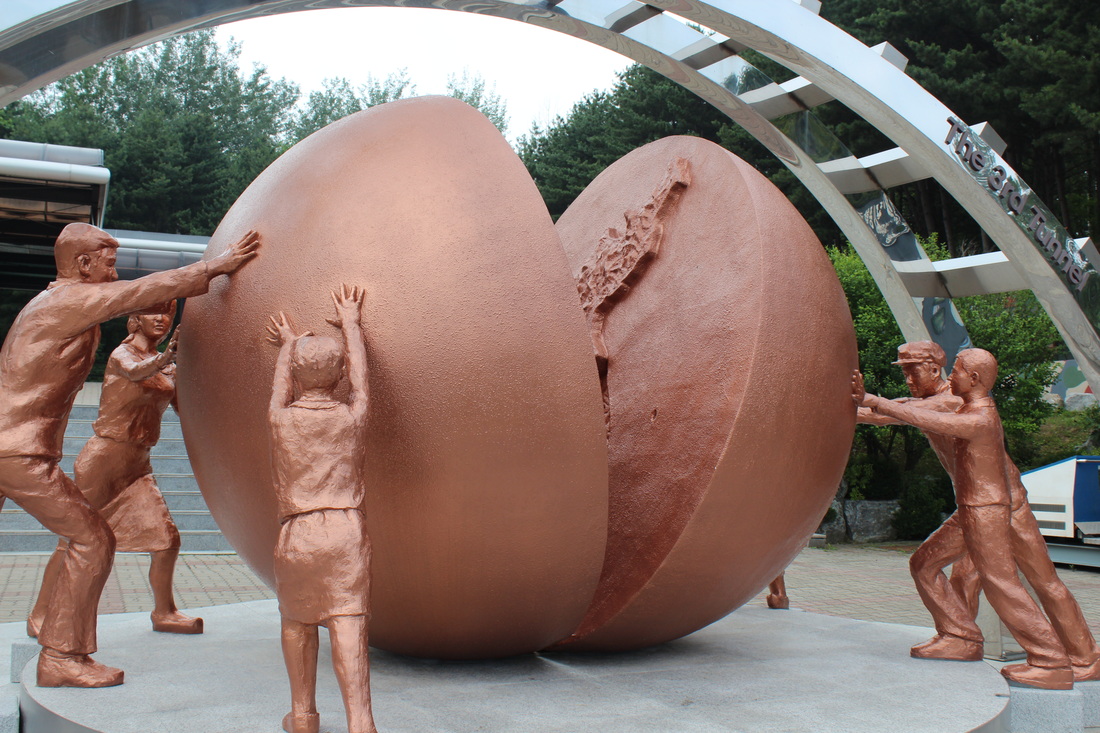
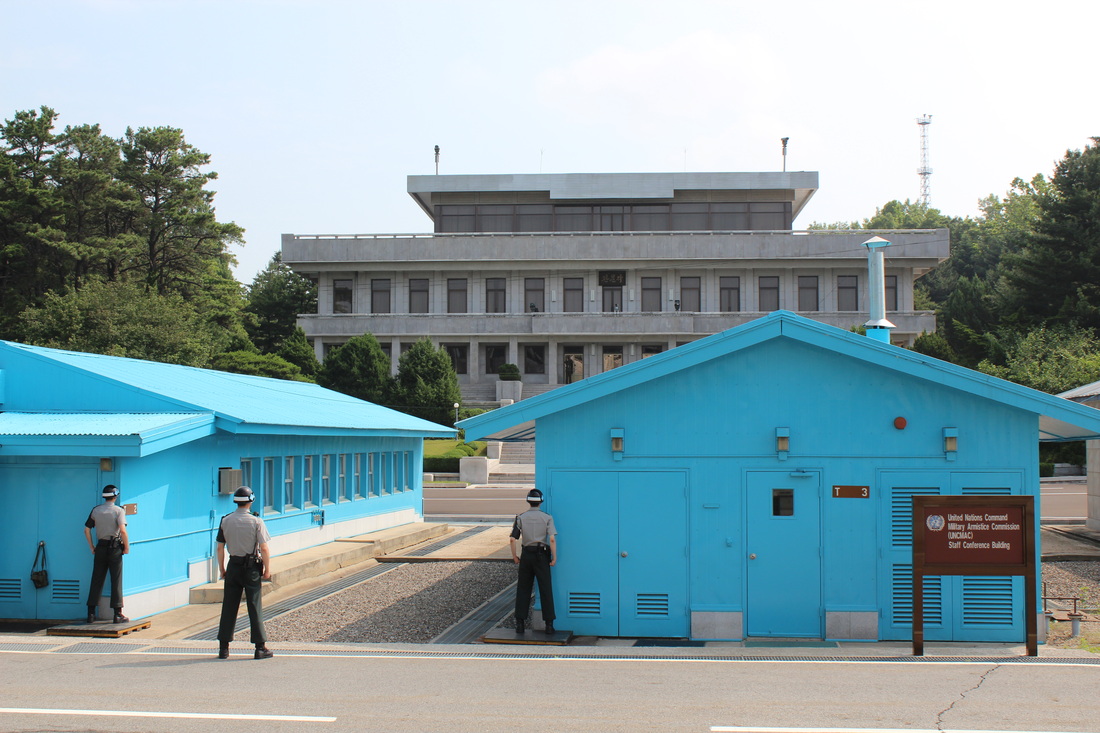
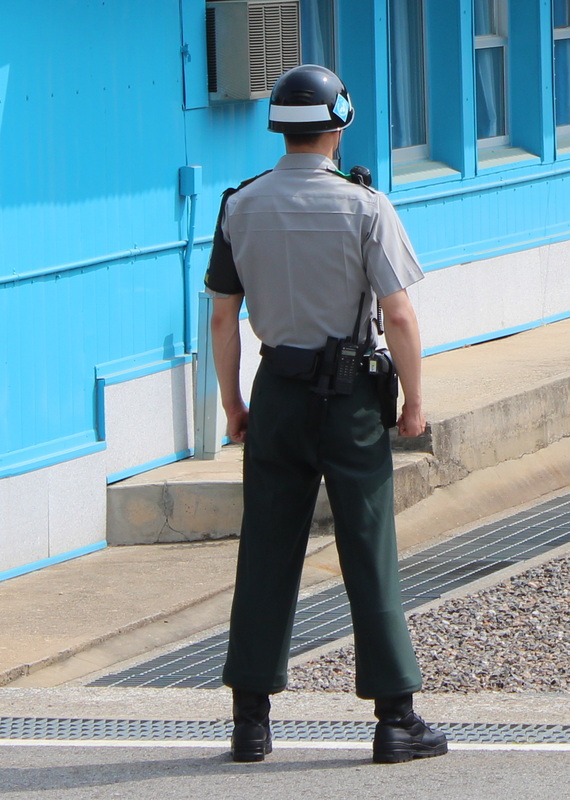
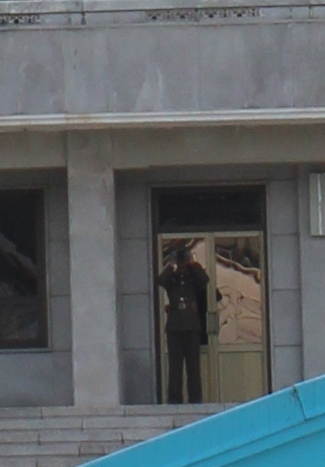
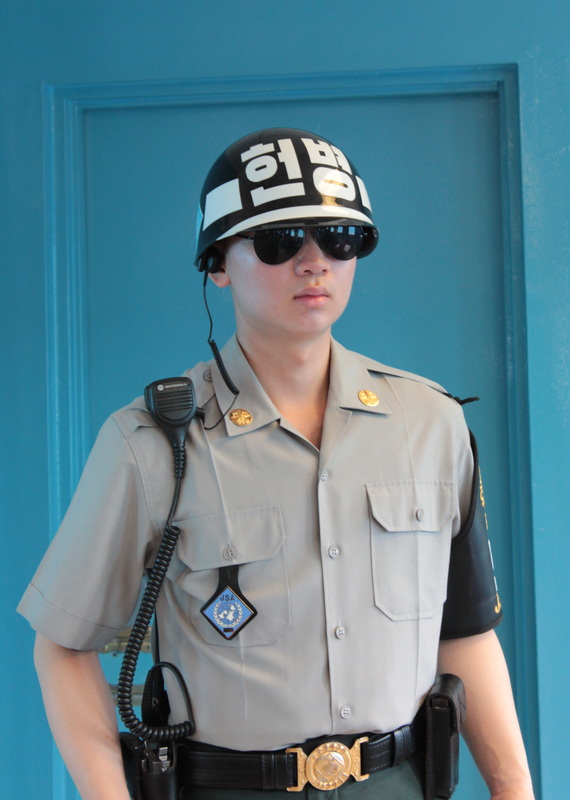

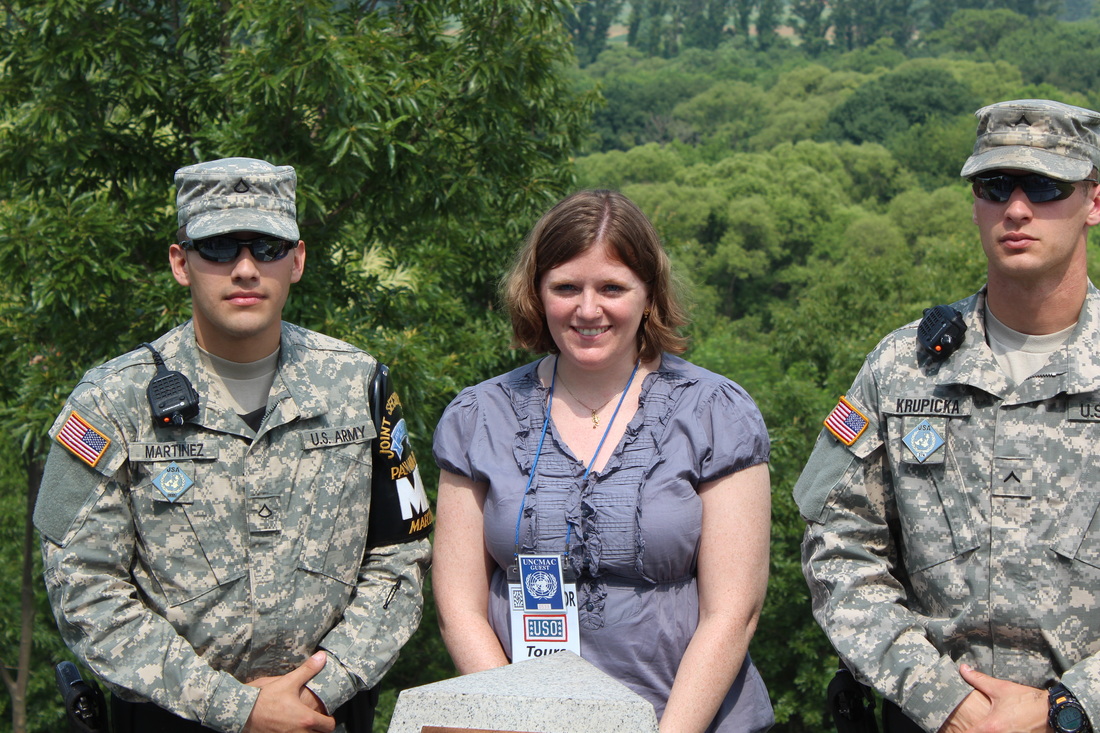








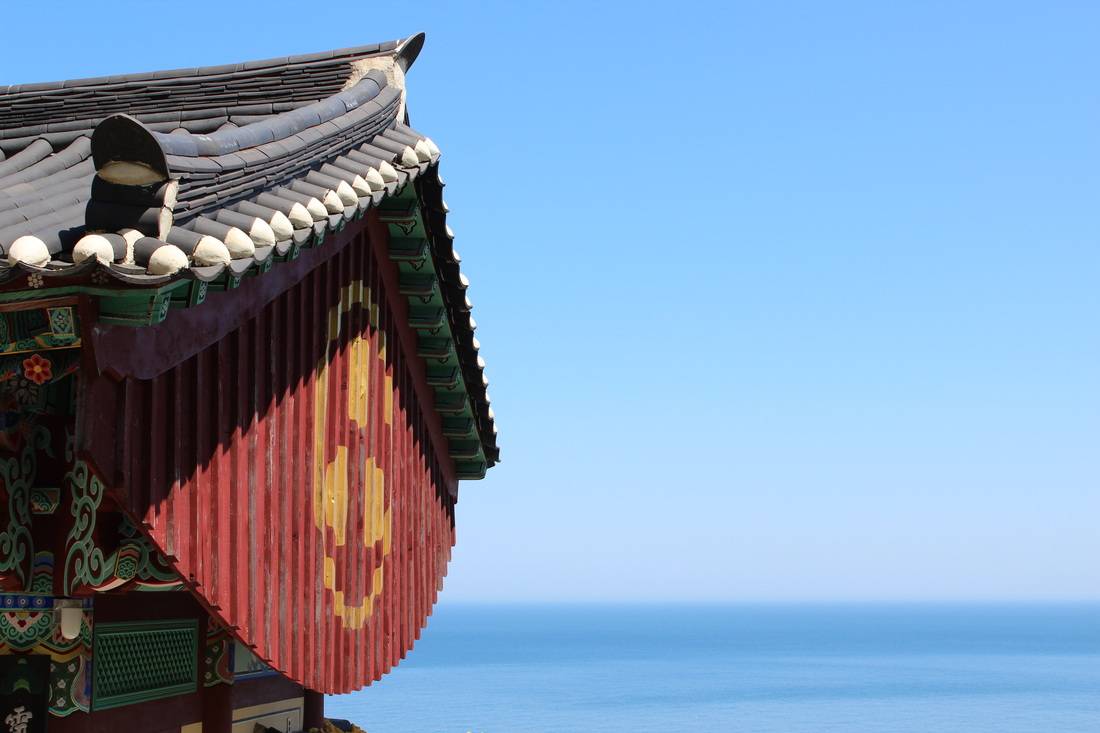





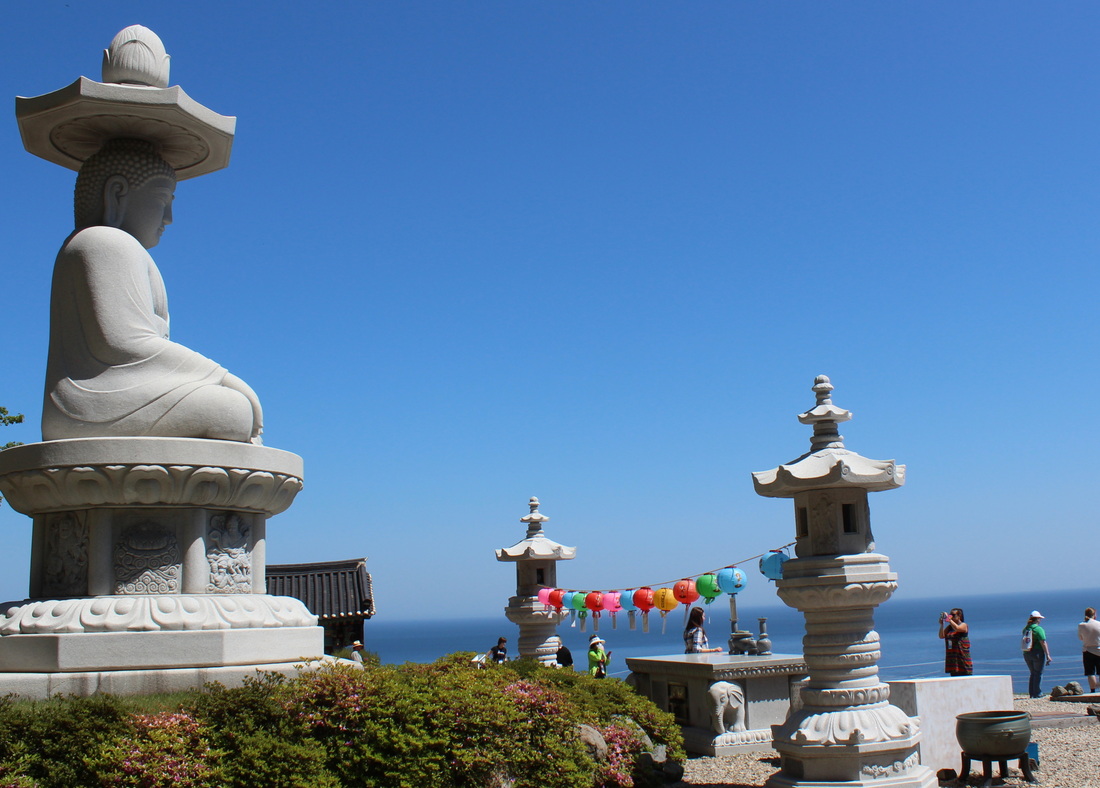
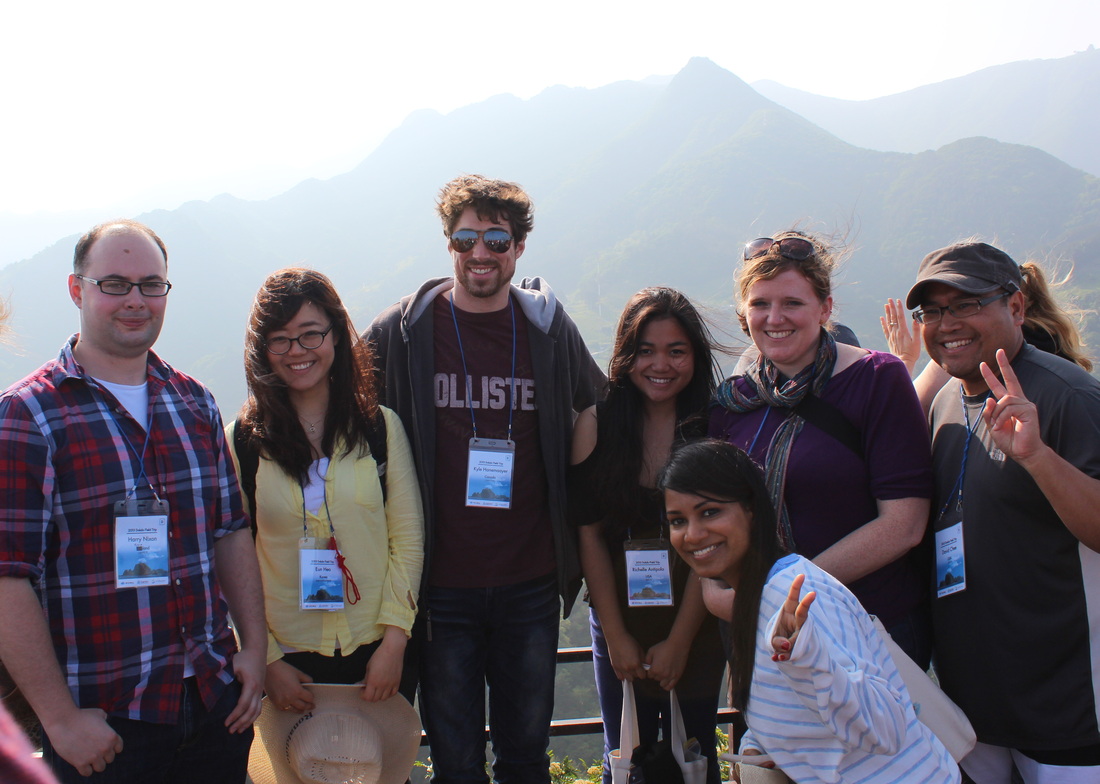
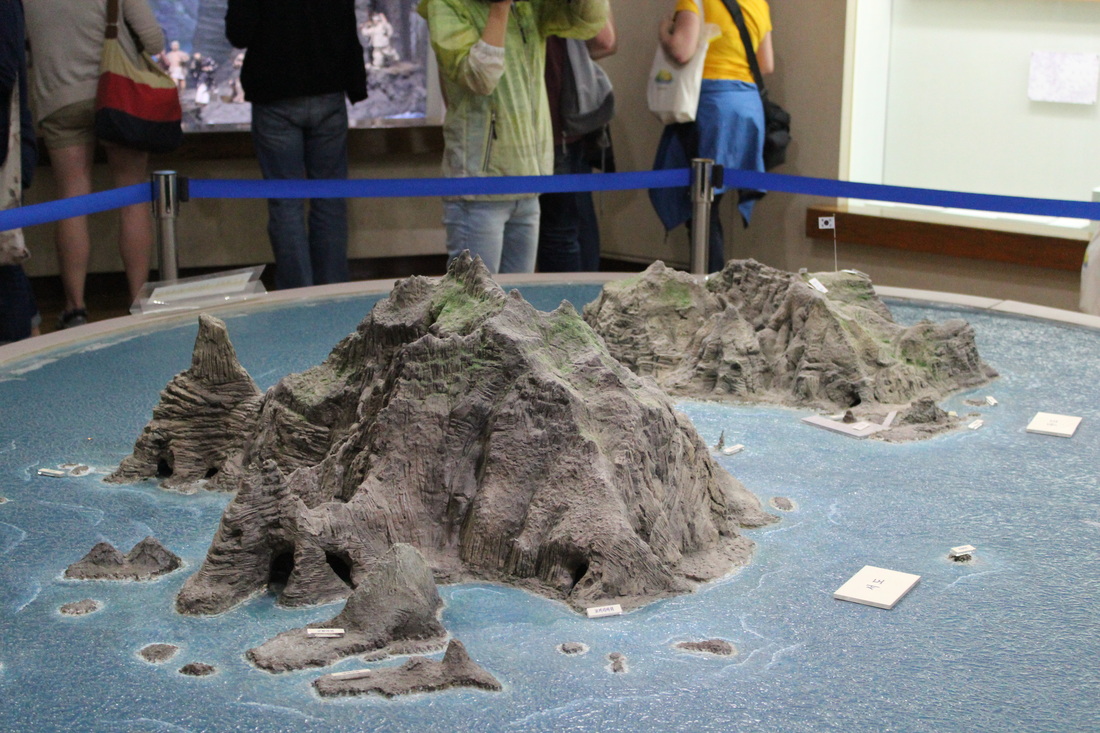
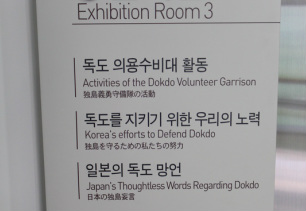

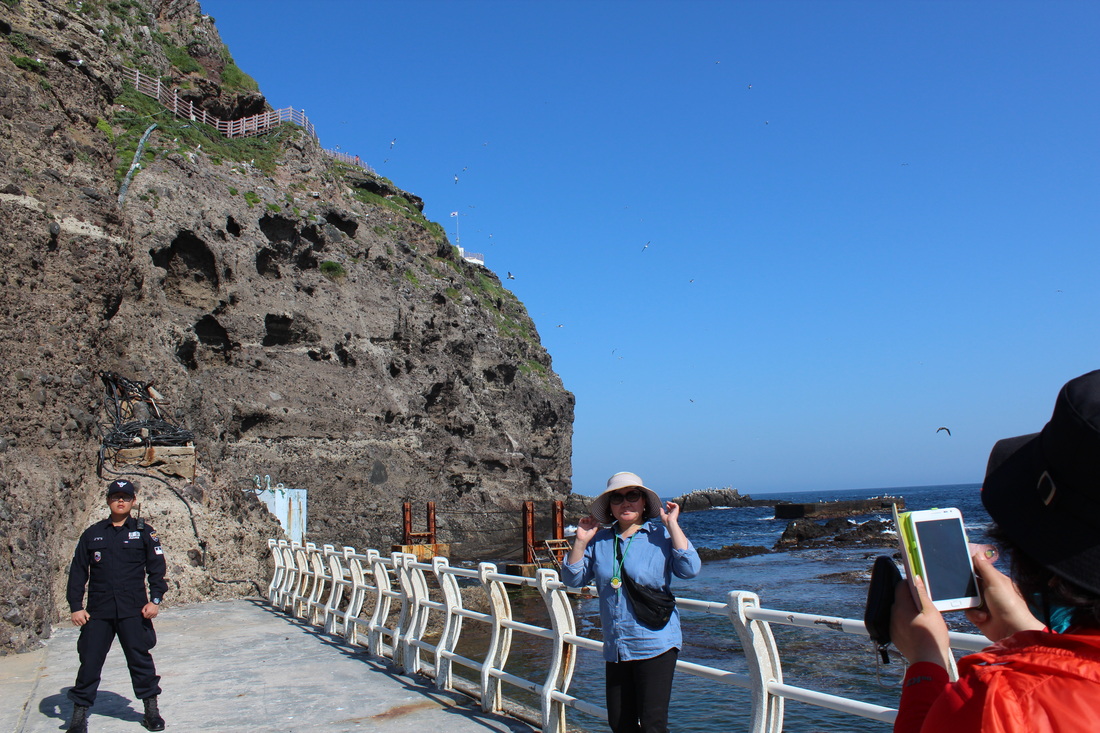
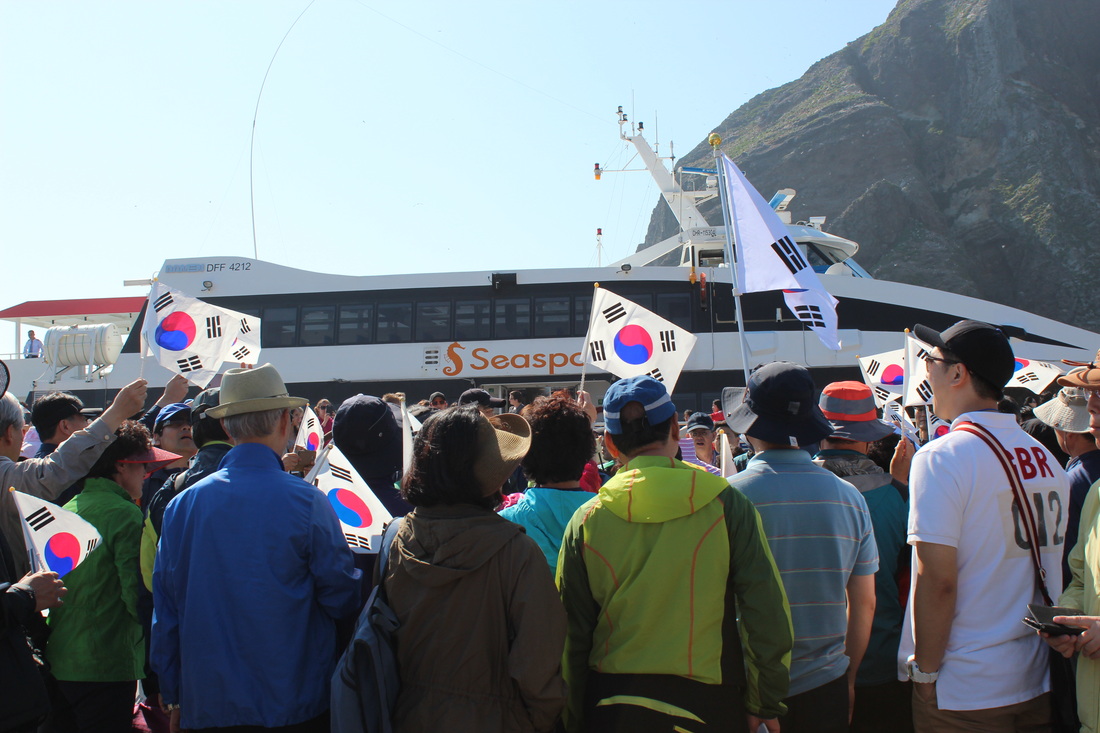
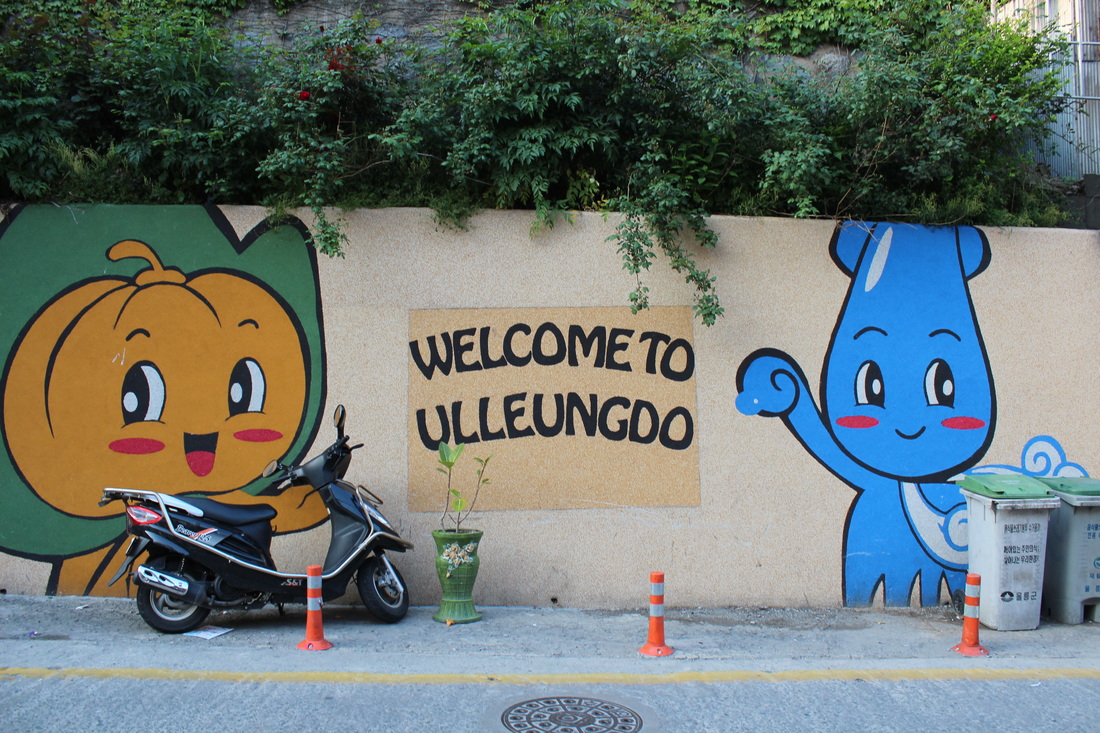
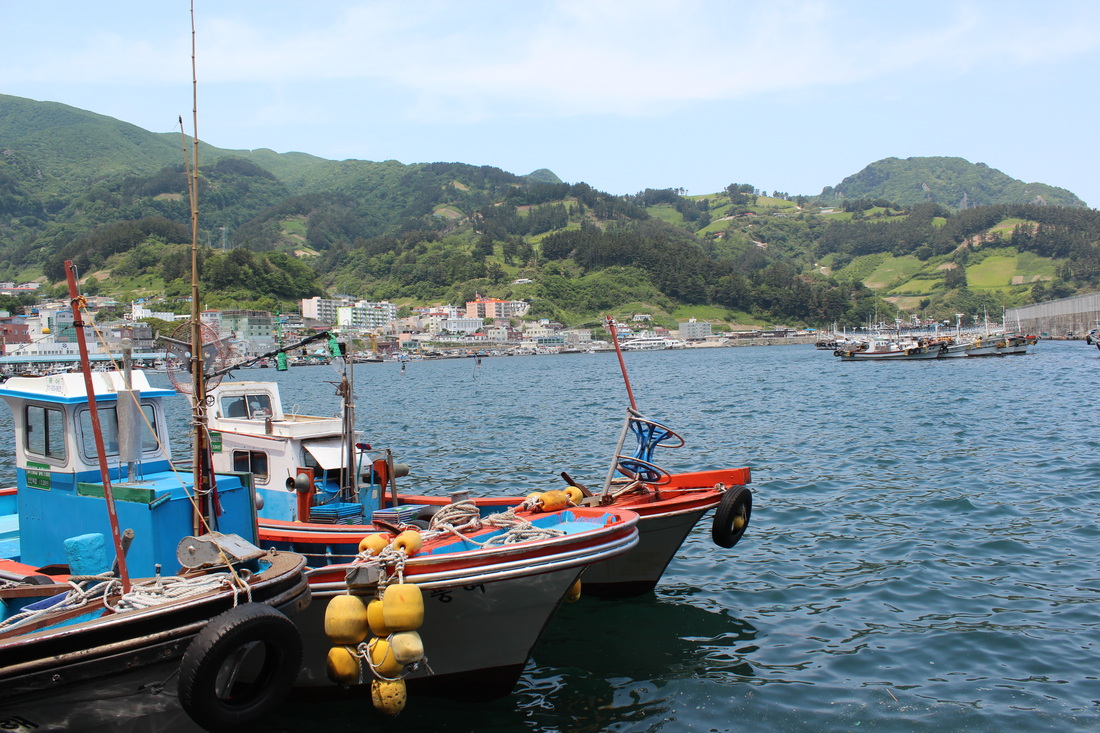

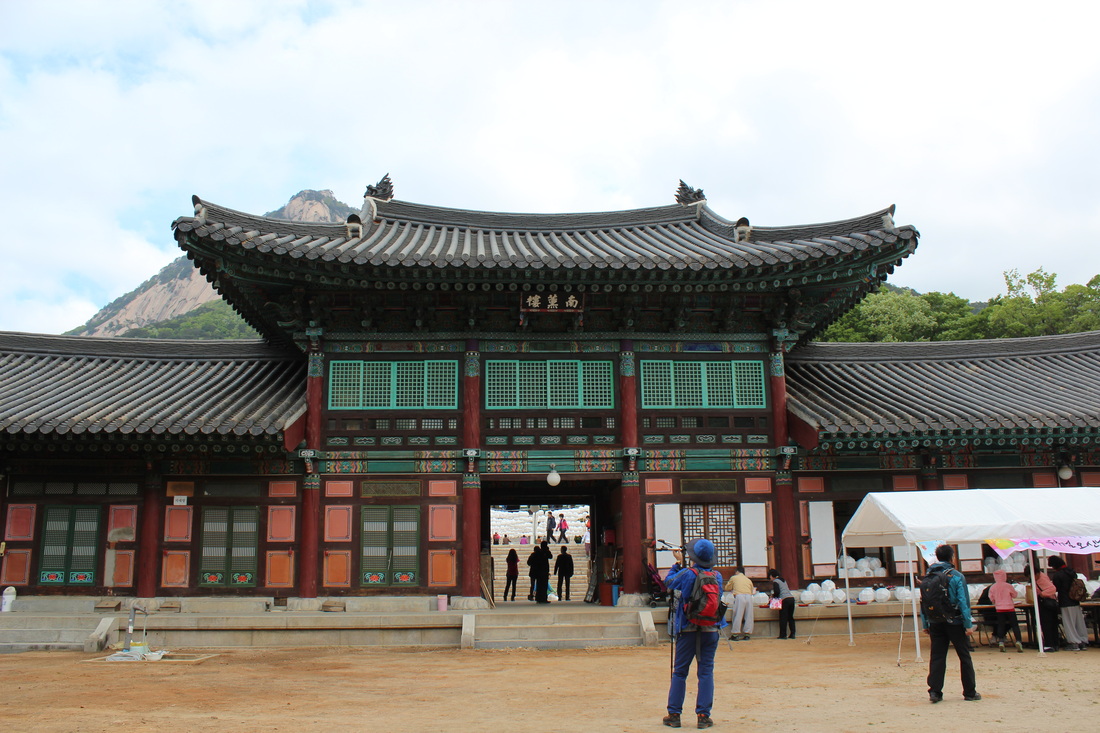
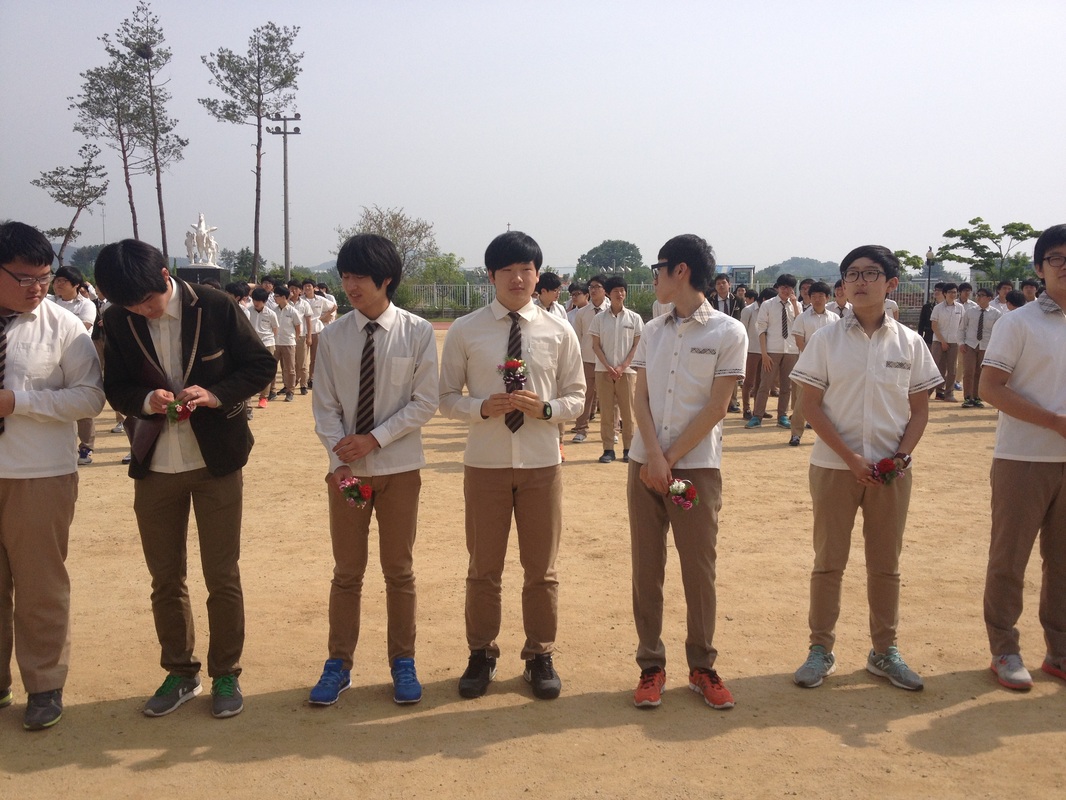
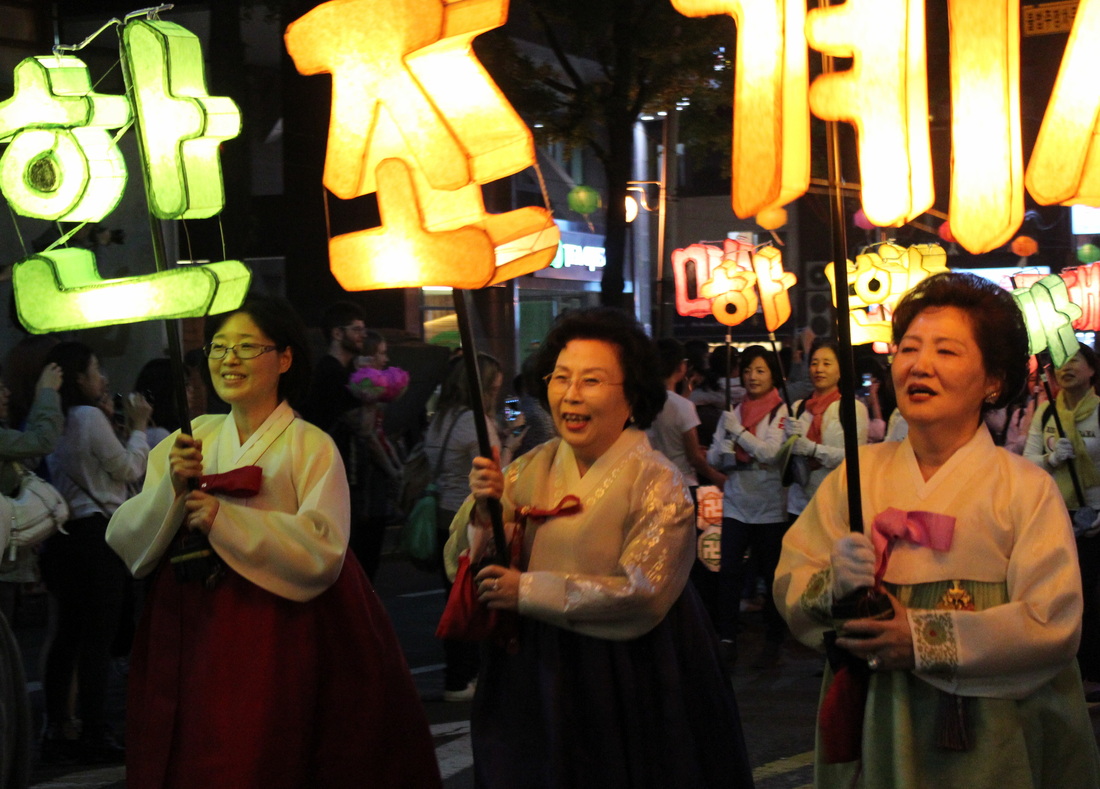



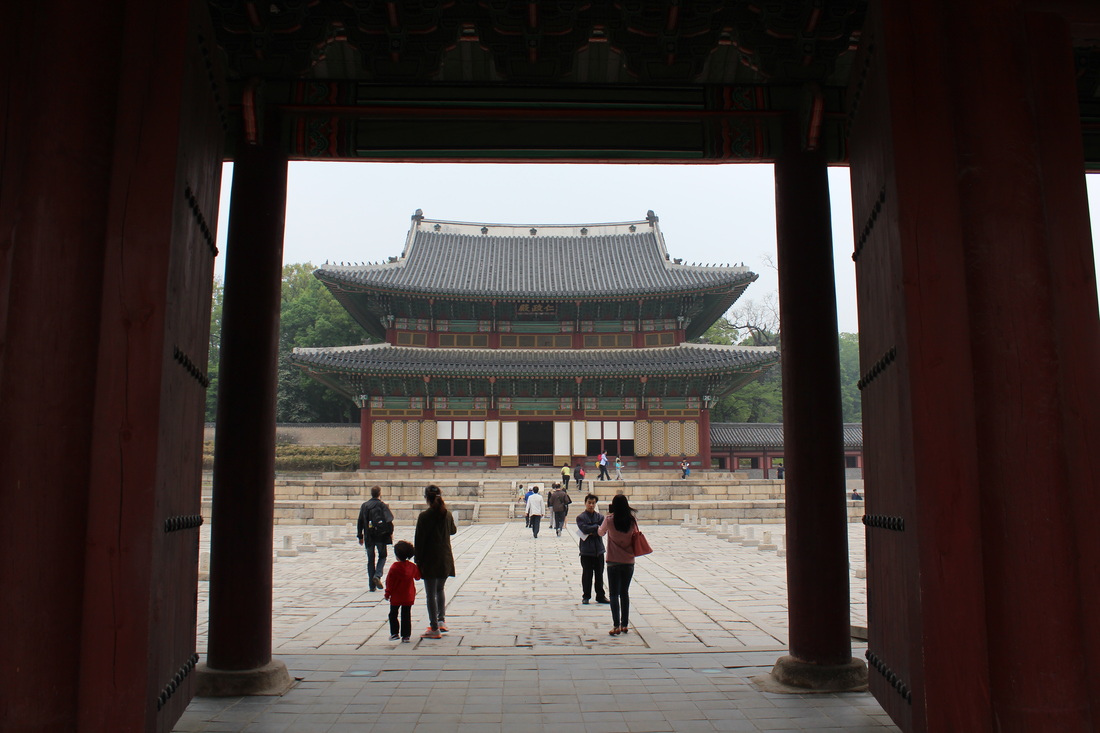




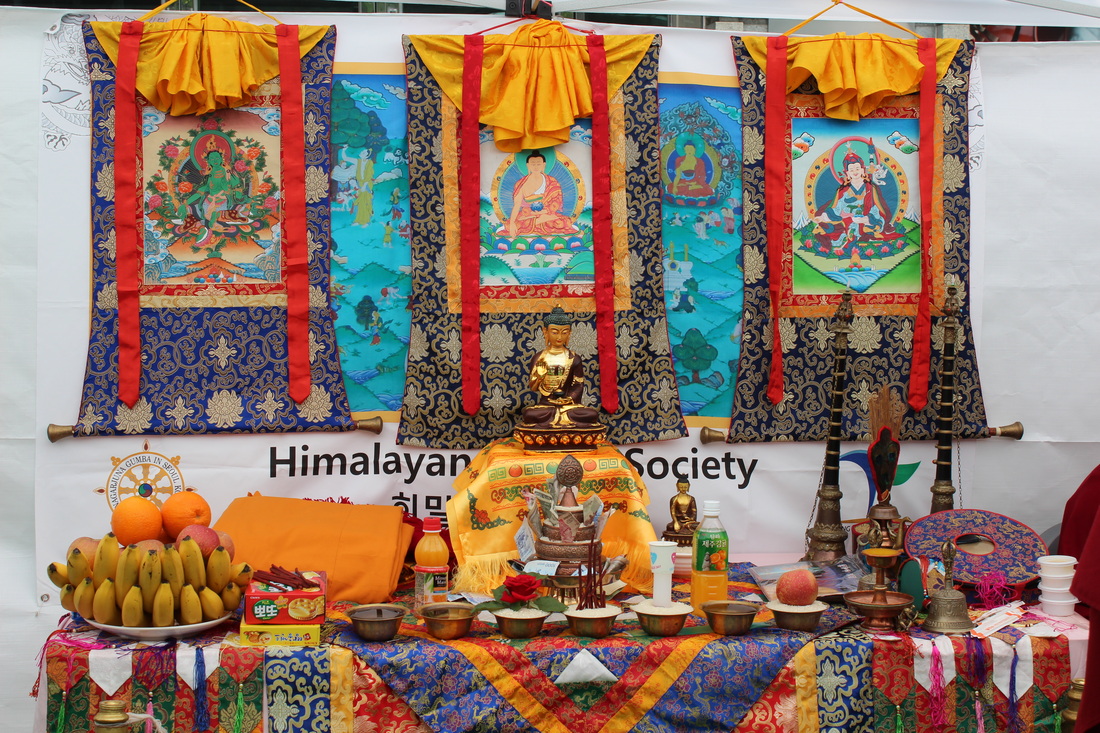
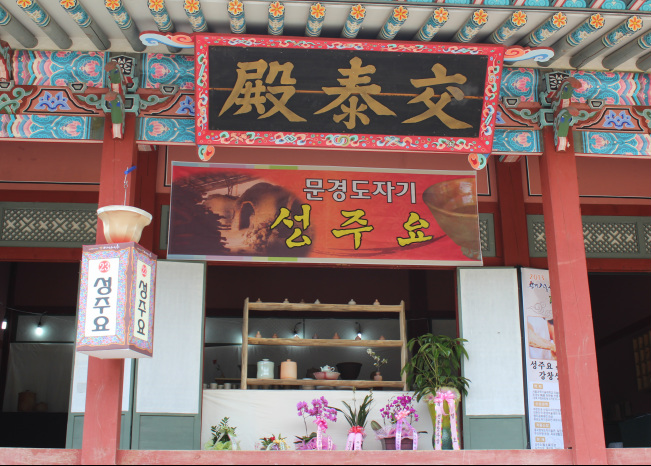










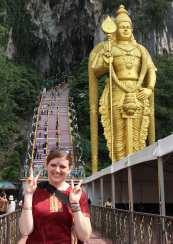
 RSS Feed
RSS Feed